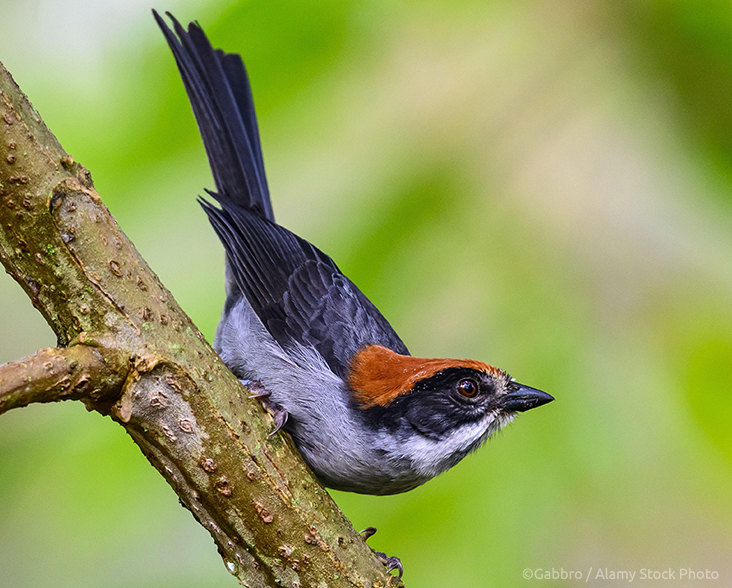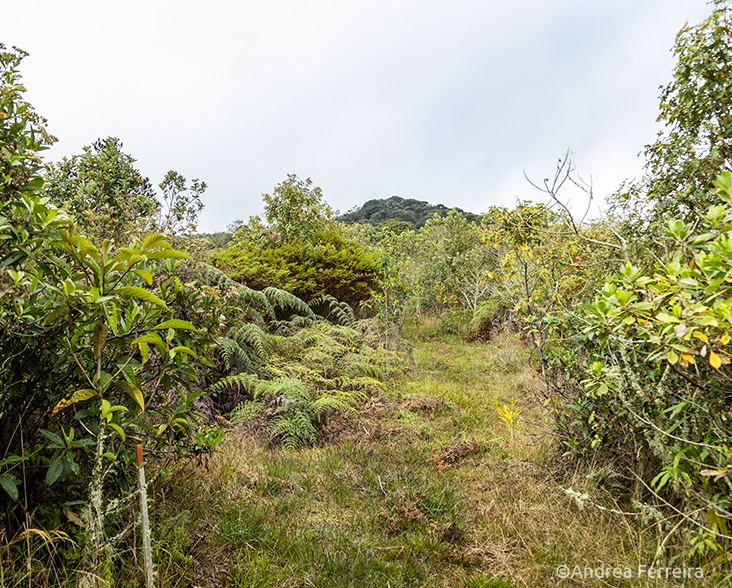Antioquia Brushfinch
Species Data
Class: Aves
Order: Passeriformes
Family: Passerellidae
Scientific Name: Atlapetes blancae
IUCN Red List status: Critically Endangered
Description
Described as a new species in 2007 based on three museum specimens with only one dated, the most recent collected in 1971, the Antioquia Brushfinch was rediscovered in the Colombian Andes in January 2018.
Very similar in plumage to the widespread Slaty Brushfinch, the Antioquia Brushfinch has paler grey upperparts, paler whitish-grey underparts and flanks, a weak black malar stripe, a paler and broader rufous crown reaching to the mantle, and greyish not white supraloral markings. The supercilium is black, ear-coverts greyish, and the grey wings show no or reduced visible white at the base of the primaries. The bill and legs are dark grey, and the iris is red. Immatures have brownish and greenish tones to the mantle.
The sexes are similar, although the male has more white on the breast and throat and is slightly more reddish on the crown. Juveniles have a dark brown crown, greyish-brown upperparts, a whitish-grey breast with greyish-black streaking, and a whitish-brown belly.
Behaviour
Very little is known about the behaviour and ecology of the Antioquia Brushfinch. This resident species is usually found in pairs or small groups, spending much time in low scrub or on the ground foraging for insects, fruits, seeds and nectar.
Nesting behaviour was first observed in 2019, when an active nest was found in a bush in a clearing surrounded by a flooded area. The 10 cm wide low cup shaped nest, situated 60 cm from the ground, was constructed of coarse dry plant material with finer material on the inner layer, and contained two white eggs with reddish-brown spots. The female incubates the eggs while the male guards the nest from the tops of nearby trees. Nesting probably takes place between January and May.
Territorial males sing from the tops of tall trees and include mimicry of other bird species in their song, such as the Great Thrush and Golden-olive Woodpecker.


Habitat
Endemic to the Central Andes of north-west Colombia, the Antioquia Brushfinch is restricted to a very small area, inhabiting low native scrub and low-lying montane forest, and occasionally rural gardens on the Altiplano between 2,500-2,900 m.
Threats and Conservation
Loss of habitat for agriculture is the biggest threat to this species. Around 73% of the region has already been converted to cattle pasture or cleared for potato crops, with over 121,401 ha (300 acres) of natural vegetation within this species range lost since 2018. The remaining suitable habitat within this species’ distribution range is at high risk of future conversion.
With only around 40 individuals known, the population is estimated to be less than 50 mature individuals spread across 25 localities, and the population trend is unknown. Therefore, the Antioquia Brushfinch is listed as Critically Endangered on the IUCN Red List.
Created in 1990 by WLT partner Fundación Guanacas Bosques de Niebla, the Guanacas Reserve is the only protected area where the Antioquia Brushfinch is present. Preserving remaining fragments of native vegetation and creating habitat corridors are vital to connect isolated populations and ensure the species long-term survival.
